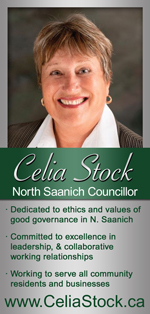Sewer Sludge: Piles of Problems for CRD
Register file photo of sewage sludge — or biosolids — being spread in Kern County by Ygnacio Nanetti
Author: A.Gortan, Citizen Journalist
Two years ago, the Capital Regional District unanimously voted to ban the use of human waste in the form of sewer sludge as fertilizer on public lands and farmland. The ban resulted from concerns that residual pharmaceuticals and metals contained in the excrement, could potentially contaminate soil and leach into water supplies.
Currently the sludge (also referred to as ‘bio-solids’) is trucked from Sooke and Saanich Peninsula treatment plants and dumped in the Hartland landfill as controlled waste.
At the June 5th, 2013 CRD Committee of the Whole meeting, Directors debated ways to deal with the increased volume of sludge that will be generated from the upcoming Victoria treatment plant.
A narrow majority of CRD Directors, including the Chair, Central Saanich Mayor Alastair Bryson, voted in favor of requesting a report associated with lifting the ban on allowing human waste as fertilizer.
“I supported the recommendation to request the report, because I was in agreement with the following conclusion in the staff report.” said Bryson.
The conclusion was a recommendation by staff to obtain a new report, outlining the implications and cost savings with broadening the current regional biosolid management policy.
This course of action is also being encouraged by the Minister of Environment.
CRD Director and Mayor of Highlands Jane Mendum, strongly opposed requesting the new report. She said the CRD has already gone down that road before, spending a significant amount of time and resources considering the idea in 2011.
She favors the precautionary principle, which was upheld by the CRD in their earlier decision to ban sludge as fertilizer. “There are many choices we could entertain in dealing with sludge, however, it seems to me that the choice with the highest risk associated with it, is applying sludge to land.”
Director Mendum acknowledges recommendations from the Ministry of Environment, but says the decision to allow sewer sludge as fertilizer, is ultimately in the hands of the CRD.


















Visit stopabadplan.ca and sewagefacts.ca to learn more about this disastrous plan.
CRD might want to re-think – look long and hard at this one. After all, they haven’t got a great track record dealing with the relatively simple kitchen waste recycle program.
Closed containment recycling works for about 90% of German waste. That is the system used at Cobble Hill, where CRD is now sending kitchen waste. The very elementary knowledge works. On the big picture, Canada really has to learn you can’t just “dump” anymore.